The news media are still Swedes’ primary source of information about the coronavirus, but fewer young people are accessing any information at all. Researchers are perceived to be more in agreement in their views on how Sweden is handling the pandemic. These are the latest findings of a study being conducted by the Swedish non-profit organisation VA (Public & Science).
In collaboration with researchers from the Karolinska Institute and Södertörn University, VA (Public & Science) is conducting a study of how people are receiving and interpreting information about the coronavirus and the ongoing pandemic. Here, we present the findings from the ninth wave of the survey, which was undertaken between 17 and 21 September 2020.
News media remains Swedes’ primary source of information
In March, at the beginning of the pandemic, traditional news media were the Swedish public’s main source of information about the coronavirus. Only a small proportion (two percent) stated that they mainly accessed information via social media. Now, when we asked the question again six months later, the pattern remains the same. For three out of four Swedes (74 percent) the news media is their primary source of information whereas only one percent primarily turn to social media. The biggest difference compared to March is that in September a significantly larger proportion had not accessed information about the coronavirus at all during the preceding two days (eleven percent, compared with one percent in March).
Amongst the group aged between 18 and 29, 17 percent had not accessed information about the coronavirus during the preceding two days. The corresponding proportion amongst the group aged 65 years or older is seven percent.
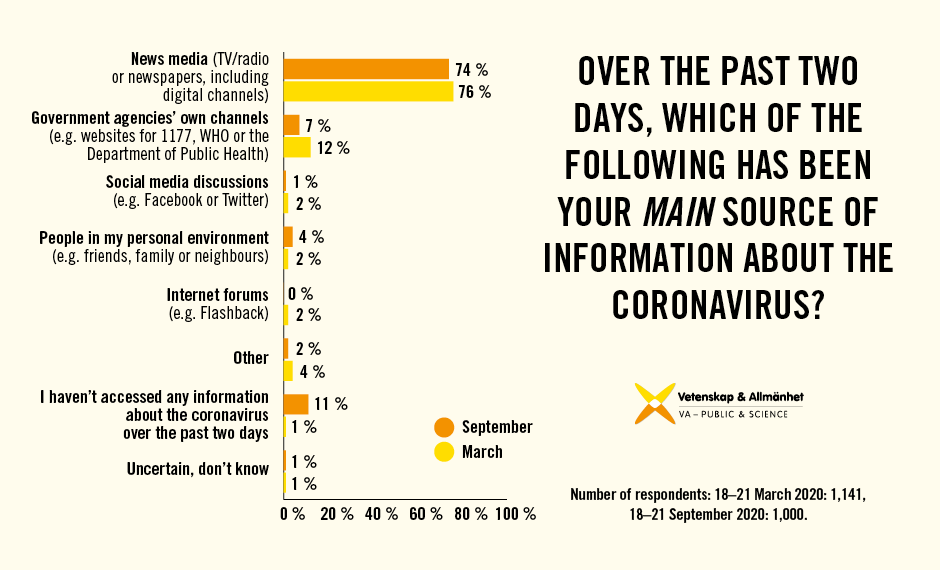
Increasingly fewer Swedes perceive the tone of reporting on the coronavirus in the media reporting as hyped or alarmist. In the latest wave of the survey, 21 percent perceive the reporting as fairly or very hyped/alarmist, compared with 67 percent in mid-March. Instead, a growing group perceives the tone to be more neutral (neither cautious/watchful nor hyped/alarmist). This group now makes up over half (54 percent) of the respondents.
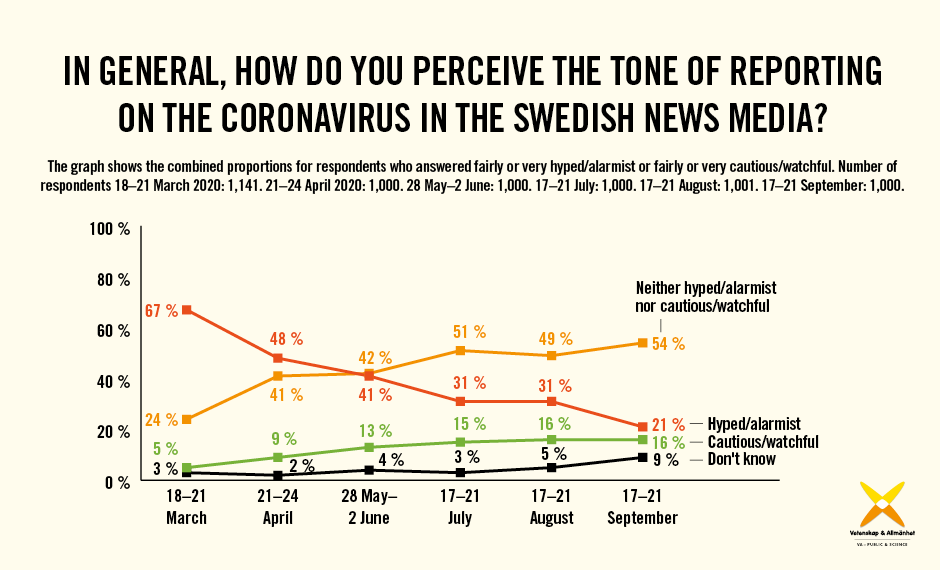
The majority of Swedes get the information they need
The Swedish public’s views on the media’s reporting of the coronavirus has not changed significantly compared to in June or April. Three out of four respondents (64 percent) believe to a fairly or very large extent that they get the information they need from the Swedish media’s reporting of the coronavirus. However, perceptions differ fairly widely depending on which political parties the respondents support. A smaller proportion are of the opinion that they receive the information they need among supporters of the Sweden Democrats (41 percent) compared with, for example, the Centre Party (83 percent) or the Social Democrats (73 percent).
Around half of the respondents perceive to a fairly or large extent that the reporting is transparent (56 percent) and accommodates different perspectives/points of view (45 percent). The proportions are lowest among supporters of the Sweden Democrats, of whom 34 percent consider the reporting to be transparent, and 26 percent feel that different perspectives are accommodated.
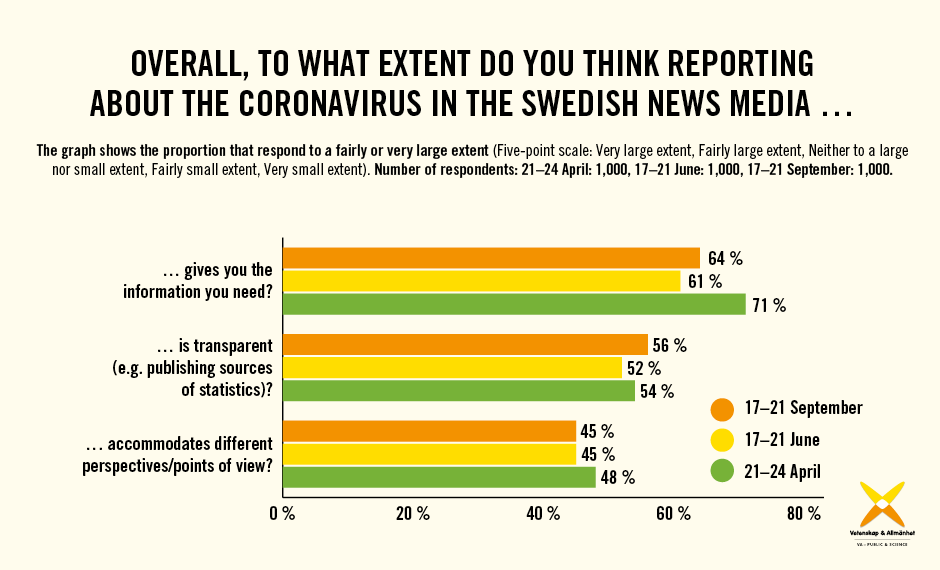
Is the public’s loss of confidence in the media reversing?
During the spring and summer, public confidence in many of the media outlets’ reporting on the coronavirus fell. Since July, this trend now seems to be levelling out or reversing for most media outlets. As in previous waves of the survey, Swedes have the greatest confidence in Swedish Television’s (SVT) reporting (in which 68 percent have fairly or very high confidence) and in Swedish Radio (64 percent). These are followed by TV4, Dagens Nyheter, local morning newspapers and Svenska Dagbladet (28–39 percent). The smallest proportion has high confidence in Aftonbladet, international media and Expressen (10–15 percent).
The Swedish public’s consumption of the media is either unchanged or slightly reduced compared to when this was previously measured. The largest decrease is seen in Aftonbladet and local morning newspapers (both of which have decreased by eight percentage points).
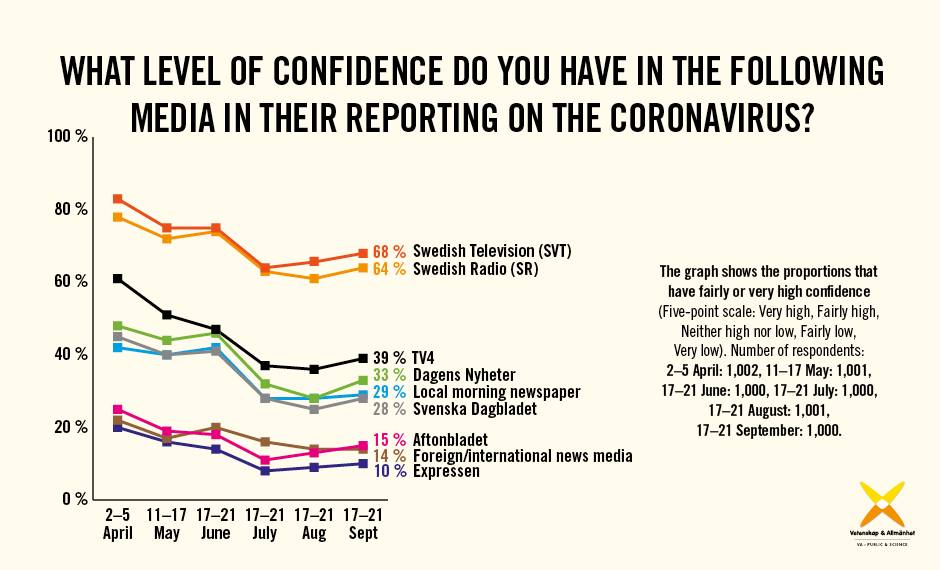
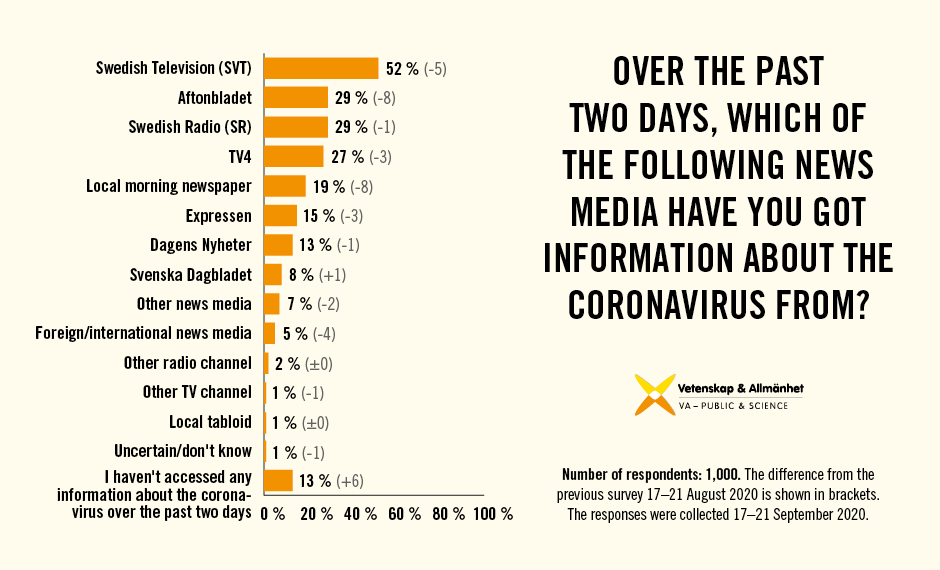
Decreased confidence in politicians
In the latest survey, six out of ten (62 percent) Swedes perceive researchers as fairly or very in agreement in their views on how Sweden is handling the corona pandemic. This is an increase of eight percentage points compared to when this was measured in August. The proportion is smaller among supporters of the Moderates (56 percent) and the Sweden Democrats (54 percent). Researchers are perceived to be most in agreement by supporters of the Left Party, where the corresponding proportion is 77 percent.
Confidence in researchers who comment on the coronavirus in the media has risen during the past month. In the latest survey, 85 percent say that they have fairly or very high confidence in researchers, compared with 80 percent in August. At the same time, confidence in politicians has fallen to its lowest level (21 percent) since the survey began in March. For other professional groups, confidence remains at the same level as it was in August.
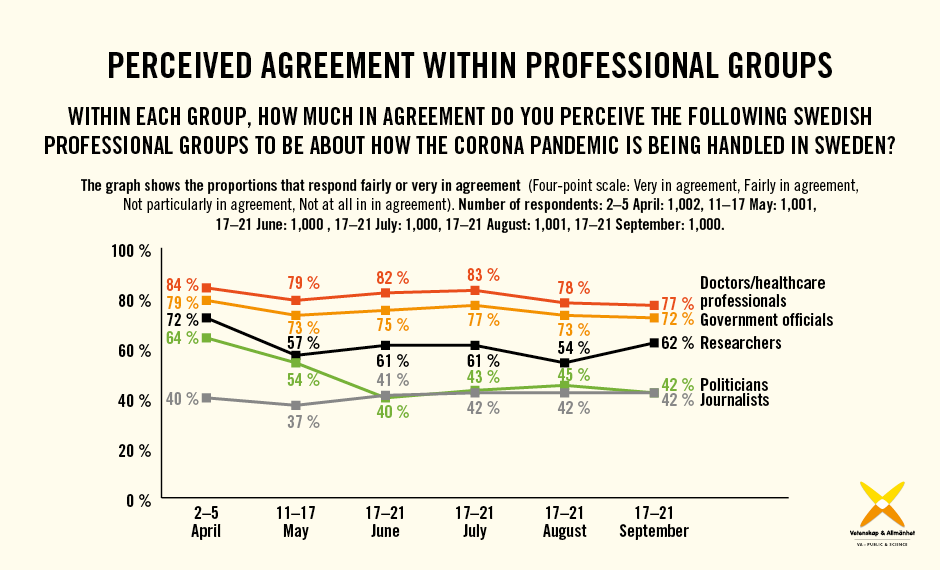
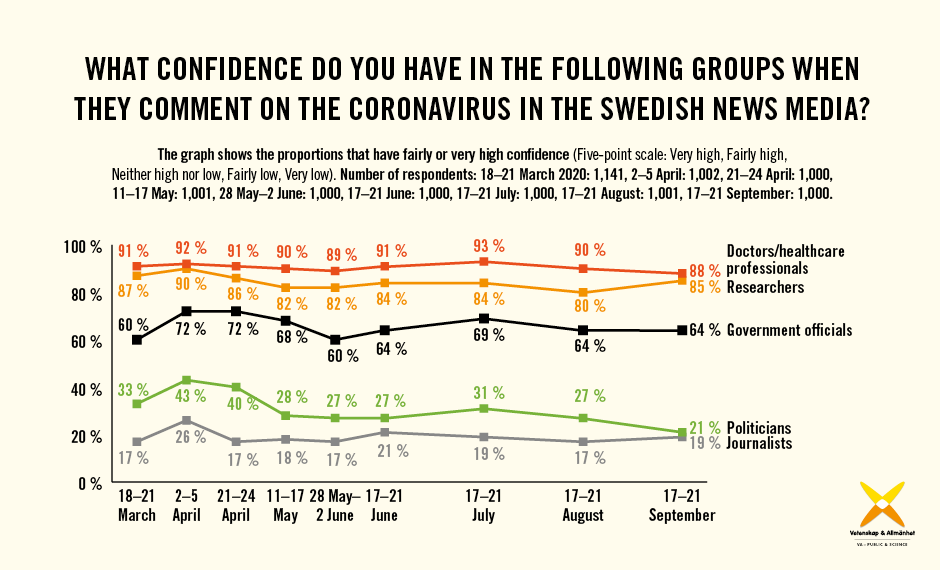
About the survey
The survey was conducted by Kantar Sifo and consisted of 1,000 interviews with a web panel based on random sampling. The interviews were conducted 17–21 September. The results are weighted based on gender, age and region of residence.
In order to monitor the Swedish public’s news consumption, confidence in key professional groups and attitudes towards media reporting over time, we are conducting a number of studies during the course of the pandemic. We also plan to undertake a content analysis of reporting on the coronavirus in the Swedish media in order to map any changes in reporting during different phases, and how this relates to public attitudes during the same time period.
The study is being conducted with the support of the Anne-Marie and Gustaf Anders Foundation for Media Research, Karolinska Institute, LIF – the Swedish Association of the Pharmaceutical Industry, Södertörn University, the Wenner-Gren Foundations and the Swedish Research Council.
Read more about VA’s study and the results of the first, second, third, fourth, fifth, sixth, seventh and eighth waves of the study.
